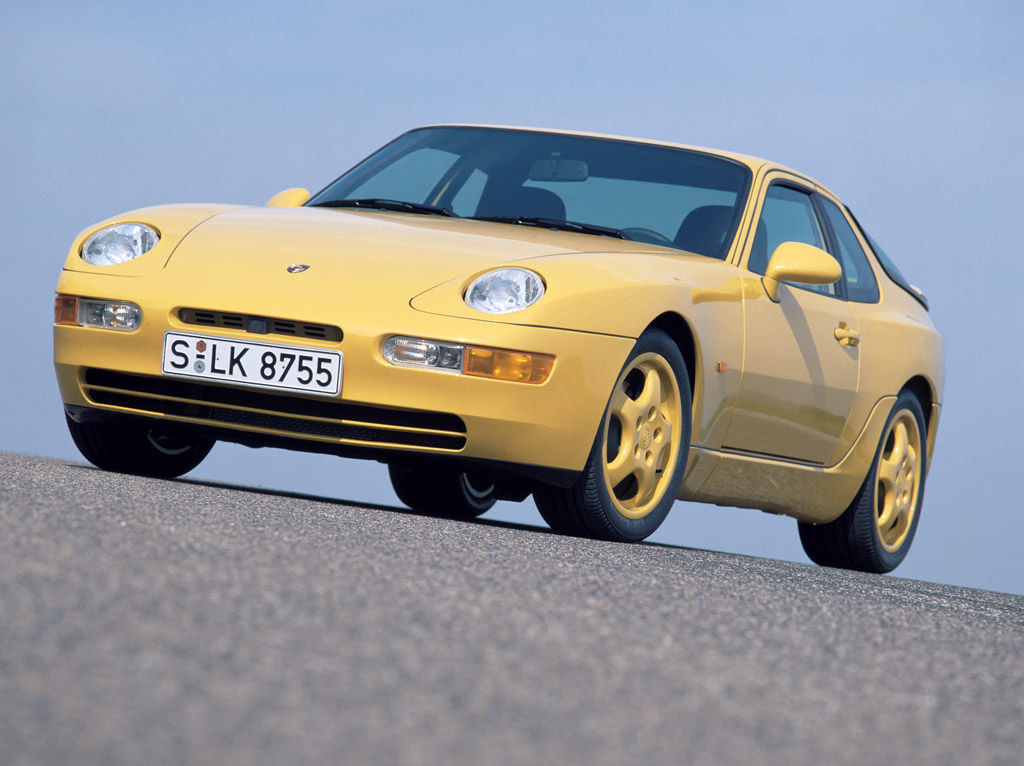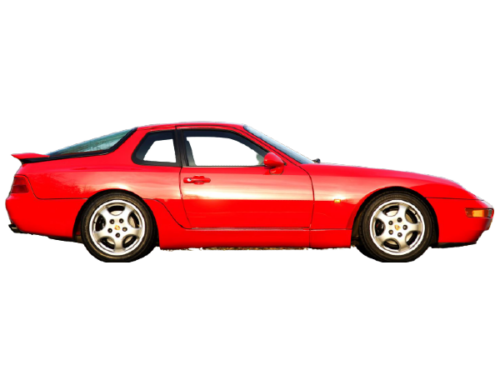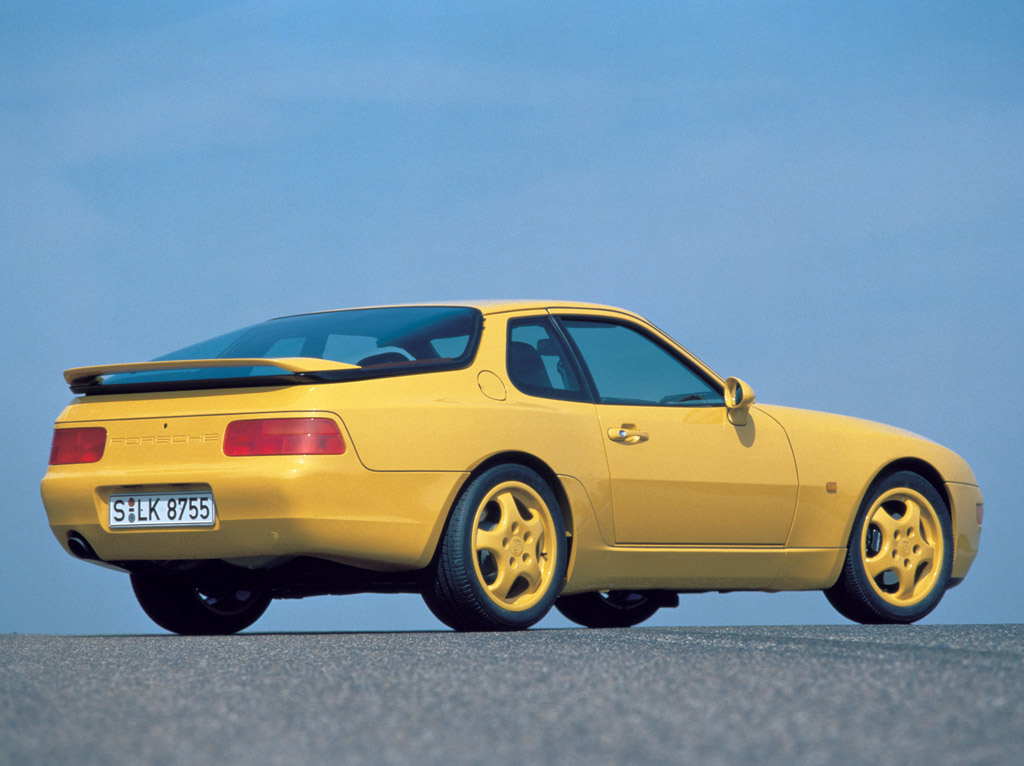(1993 – 1995) Porsche 968 CS Coupe – Ultimate Guide
Summary
The Clubsport version of the Porsche 968 was designed for track and the road from home to the track. It was more of a weekend racer rather than a daily driver. But it could do both.
Porsche built only sports-cars back in the ’90s. It was its specialty and even the 928 GT was considered a sporty vehicle and had special versions. The 968, on the other hand, was designed on the base of the 944, which was used for racing in various parts of the world.
The 968 Club Sport was designed with racing in mind. The exterior looked almost the same as any other 968. With its long hood and short cabin, it had the image of a big engine in the front, even though there was just an inline-four unit. In the rear, a 968 CS badge, and a small spoiler were installed on the liftgate.
Inside, the car was stripped down to its essentials. It was fitted as standard with slim bucket seats, but there was a no-cost option for the regular seats. There was no bench in the back. Moreover, instead of a big shelf above the trunk area, there was a flimsy piece of fabric. The car came without a radio or an AC-unit, but these could have been added from the options list. To open or close the windows, a manual system was installed instead of the powered one.
The 968 CS was fitted with larger wheels, larger disc brakes, and stiffer suspension. Further reinforcements were installed in the engine compartment between the dampers’ towers. The engine was a 3.0-liter unit fitted with the variable valve timing named VarioCam from the standard 968. It offered 240 hp, like the rest of its stablemates. But when prepped for the race-track, it could get some more with new parts installed.
The Story
The track day version of the 968 coupé was introduced in the end of 1992 as a 1993 model. It was significantly cheaper than the regular 968 coupé. Porsche had to reduce the 968 price in order to improve sales, so the introduction of the CS was the perfect possibility for price reduction without showing that the company is struggling and is lowering the prices because of that. Although Porsche’s financial problems were initiated by economic problems in the USA (Porsche US sales had fell from 30,000 to 4,000 between 1986 and 1992) – the CS was not a product for USA.
The 968 CS was put into production with the following weight reduction measures:
- Without airbags (instead a nice 3-spoke sports steering wheel produced by German company Atiwe and dashboard from the 944)
- Without electric motors for windows (manual winders)
- Without electric motors in the seats (fully manually adjustable seats), optional bucket seats lowered the weight further
- Without analog clock and exterior temperature display (instead digital clock/stopwatch from 944)
- Without air conditioning, but also without automatic temperature control (basic heating system from 1985.5 944)
- Without electric motors in the mirrors, without mirror heating
- Without alarm system, without central locking
- Without rear seat
- Without electric motor to open the rear hatch latches. Instead, a cable-operated manual release behind driver’s seat. In the rear bumper there still was the lock opening, put no lock anymore (it was blanked off). In the regular 968, the lock in the tail is an electric switch that actuates the electric motor that releases the tailgate, but there is no such motor in the CS and therefore the hatch cannot be opened from outside.
- Lighter lower amperage battery, lighter alternator, radiator cooler with only one electric fan instead of two (all this assuming the optional AC system was not ordered)
- Lighter door cards from 944 and only 2 speakers
In addition to the weight-saving measures, sportiness was extended with lowered suspension (shorter springs at the front, different torsion positions at the rear), but the “CS-essential” M030 performance chassis package was not a standard feature and had to be paid for. The wide 17″ wheels added some weight, but were worth it.
Very sporty cars – cars with bucket seats and without airbags – are not allowed in the USA, so Americans could only dream of the CS. In UK, the 968 CS was titled as the Best Car of 1993 by Autocar & Motor magazine.
Porsche was in financial troubles and could not keep true to its principles. This meant Porsche now sold what the customers wanted – many wanted the CS because of the CS-letters on the rear panel (sportier image), but were not interested in track days, so they filled their CS with all the luxury equipment found in the regular 968. This meant these cars were 968 CS on registration, but not in reality. The most correct 968 CS was ordered with only two options – the performance chassis package (M030) and the bucket seats (M383/M384). In reality, the chassis and bucket seats were rarely ordered and the CS cars were often specified even with sunroof and airbags, power windows, rear seats and an air conditioning system (which in addition to the AC system included heavier battery, heavier alternator and an additional cooler fan motor).
The 968 CS were painted Black, Guards Red, Grand Prix White, Speed Yellow or Blue (1993 Maritime Blue, 1994-1995 Riviera Blue). Porsche importer for Great Britain had the sides of the CS covered with decals reading “ClubSport”. These decals cannot be ordered from Porsche.
In February 1993, two 968 CS managed to take 1-2 victory at the Sandown 6 hour production car race in Australia. The winning car was piloted by Peter Fitzgerald, Brett Peters and Nicholas Leutwiler.














